
Saludos comunidad de #Arquitecture+Design, es un placer escribir nuevamente y hoy quiero mostrarle la casa de Diego Velázquez, el conquistador, ubicada en El centro histórico de la ciudad de Santiago de Cuba, es el Parque Céspedes, una plaza abierta en la parte alta de las terrazas marinas sobre las que se fundó en 1515 la urbe, delimitada por el este con la Catedral Metropolitana, por el norte con los hermosos edificios del Hotel Casa Granda y el Club San Carlos, por el oeste con el Palacio de Gobierno y por el sur, colindante con el palacio, está la casa de Diego Velázquez de Cuellar.
Esta edificación del siglo XVI, es considerada la más antigua casa de vivienda que se conserva hoy en Cuba y América, donde la influencia mudéjar en su arquitectura es fácilmente distinguible desde el exterior por esa hermética construcción de sillería donde se abren ventanales con entramados de celosías.
Se convirtió en 1970 Museo Histórico de Ambiente Cubano, se dotó al lugar con diverso mobiliario perteneciente a la época colonial y se sumó, como parte del museo, una vivienda aledaña del siglo XIX que también posee notables valores arquitectónicos.
Greetings #Arquitecture+Design community, it is a pleasure to write again and today I want to show you the house of Diego Velázquez, the conqueror, located in the historic center of the city of Santiago de Cuba, it is Parque Céspedes, an open square in the high of the sea terraces on which the city was founded in 1515, delimited to the east by the Metropolitan Cathedral, to the north by the beautiful buildings of the Casa Granda Hotel and the San Carlos Club, to the west by the Government Palace and To the south, adjacent to the palace, is the house of Diego Velázquez de Cuellar.
This 16th century building is considered the oldest residential house preserved today in Cuba and America, where the Mudejar influence in its architecture is easily distinguishable from the outside due to that hermetic ashlar construction where windows with latticework frameworks open.
It was become on1970 in a Historical Museum of Cuban Environment, the place was equipped with various furniture belonging to the colonial era and, as part of the museum, a neighboring house from the 19th century was added that also has notable values. architectural.
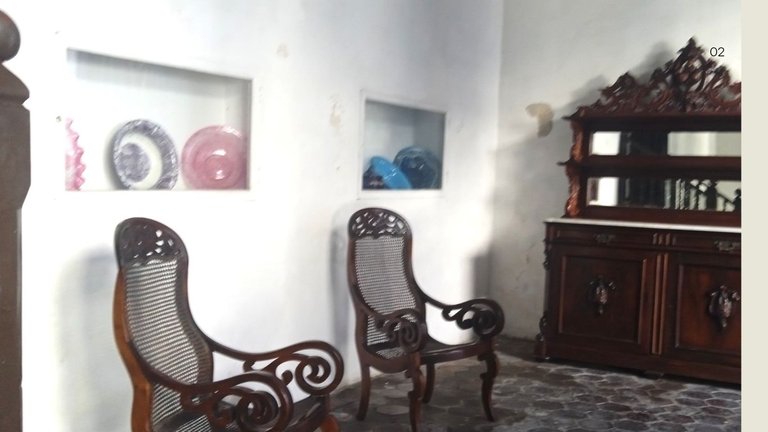
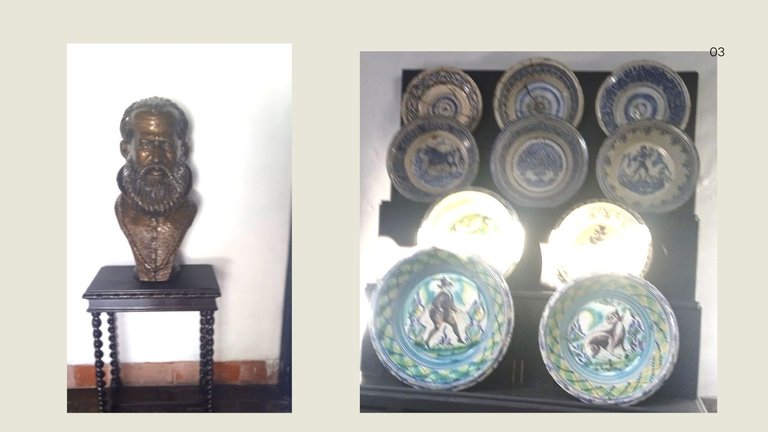
Al entrara al museo, antiguamente Casa de Gobernación y Fundición de Oro te encuentras con muebles con un estilo Reina Ana barroco y barroco cubano. Y con una preciosa porcelana, que te deslumbra desde que comienza el recorrido hasta que termina.Y un busto de bronce con la imagen de Diego Velázquez.
Upon entering the museum, formerly Casa de Gobernación y Función de Oro, you will find furniture with a Queen Anne baroque and Cuban baroque style. And with beautiful porcelain, which dazzles you from the beginning of the tour to the end.And a bronze bust with the image of Diego Velázquez.*
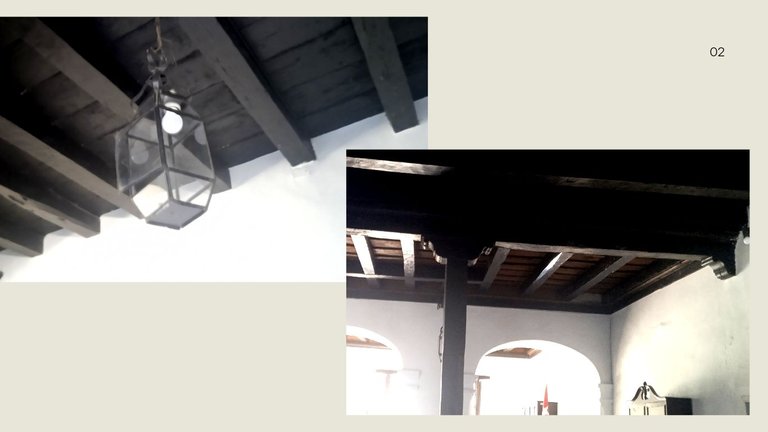
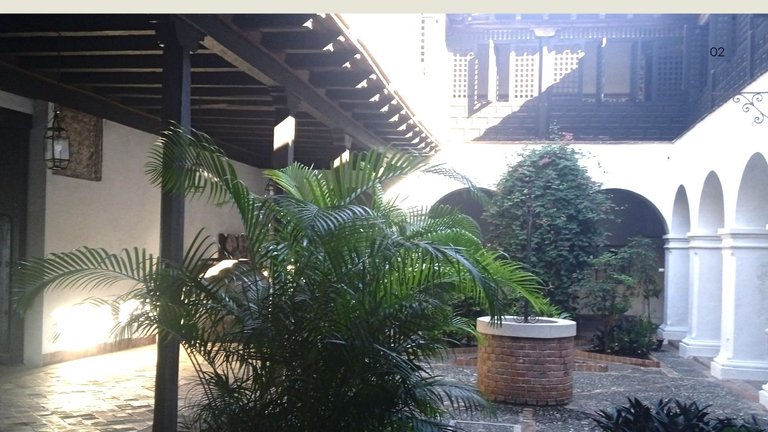
Con una influencia arquitectónica Arabe La antiquísima casa fue construida con muros exteriores con sillares, bloques de piedra labrados, y, en sus interiores, horcones de madera insertados a las paredes. En estas últimas se utilizó la técnica conocida como verdugada de ladrillos, de origen árabe y más resistente, así el mampuesto sirvió para su revestimiento.
With an Arab architectural influence The very ancient house was built with exterior walls made of ashlars, carved stone blocks, and, inside, wooden posts inserted into the walls. In the latter, the technique known as brick verdugada, of Arab origin and more resistant, was used, thus the masonry was used for its covering.
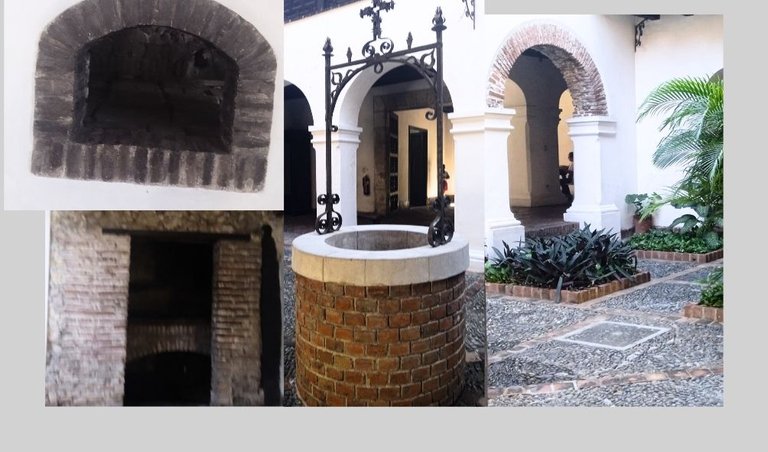
A un costado encontramos el horno de oro, que era el taller de fundición de oro en el que el oro recogido se transformaba en lingotes y se mandaba a España, ya que este era el objeto económico principal de la colonización.
Luego encontramos un primer patio donde se encuentra un pozo de agua circular y fuertes columnas que se unen entre si con arcos.
On one side we found the gold furnace, which was the gold smelting workshop in which the gold collected was transformed into ingots and sent to Spain, since this was the main economic object of colonization.
Then we find a first patio where there is a circular water well and strong columns that join together with arches.
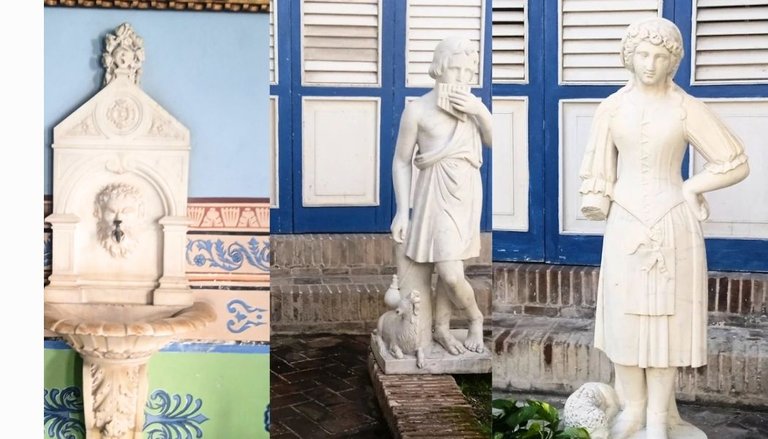
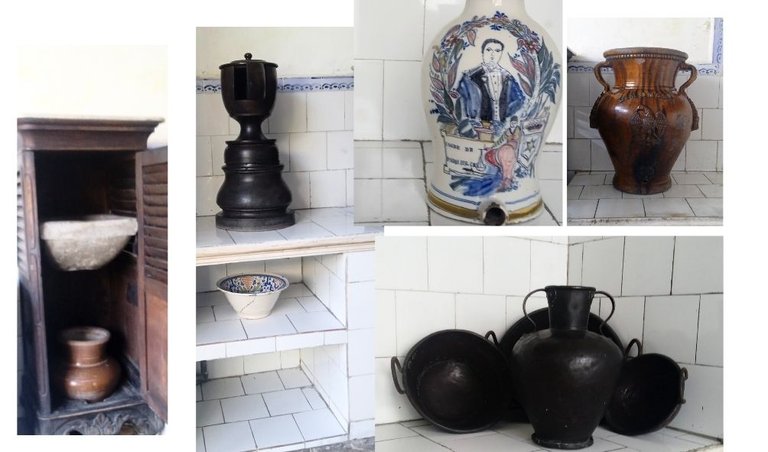
Podemos observar también la cocina,recientemente restaurada con sus vasijas para el agua y los instrumentos utilizados para cocinar.
En un segundo patio encontramos estatuillas y fuentes de agua que vinculan la casa de Diego velázquez con una vivienda aledaña del siglo XIX que también posee notables valores arquitectónicos.
Gracias al trabajo realizado por Francisco Prat Puig, arqueólogo, historiador y profesor, el cual se dedicó a buscar por toda Cuba las piezas de arte y traerlas para el museo, hoy en día podemos contemplar todo este invaluable tesoro que aquí se atesorar, algunas fueron compradas por él ,o donada y otras confiscadas al triunfo de la Revolución.
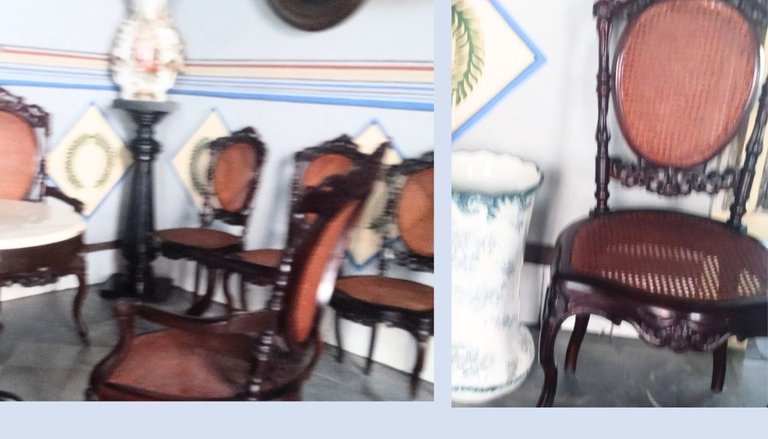
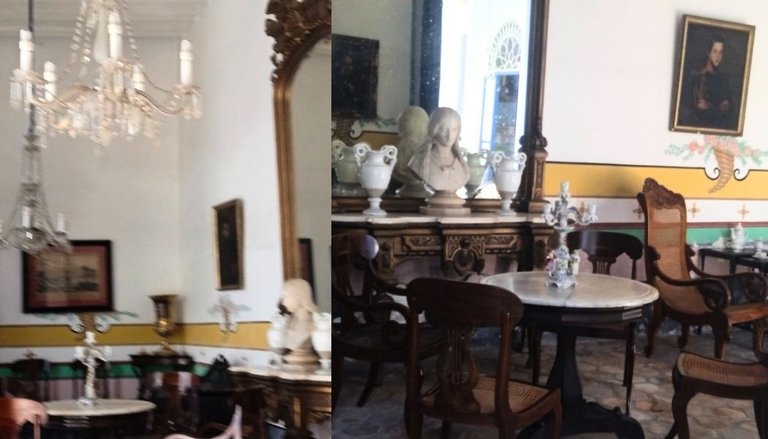
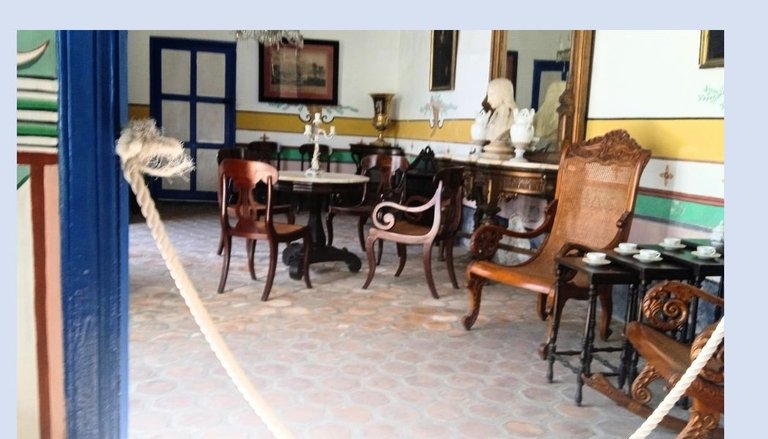
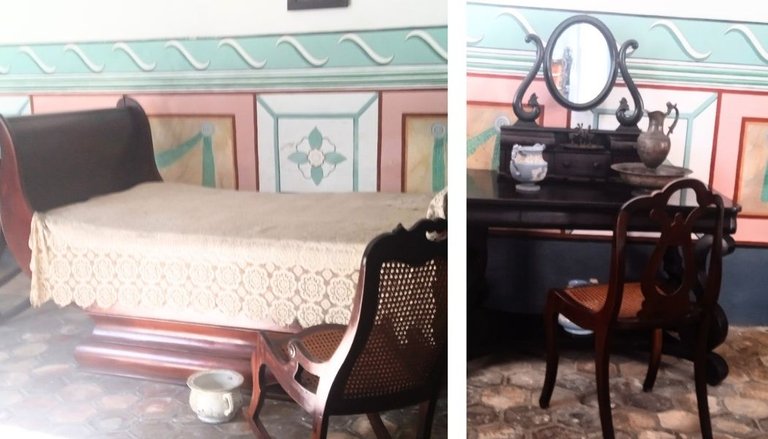
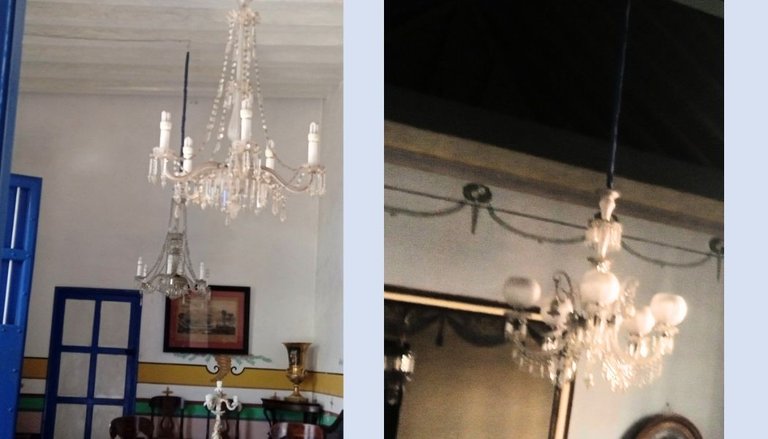
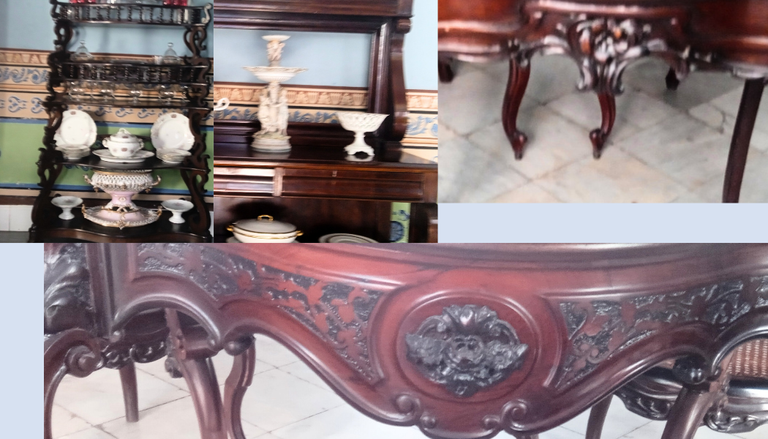
Esta es la casa contigua a la de Diego velázquez, aquí encontramos preciosos muebles con una influencia Feancesa, ya que ellos llegaron a Cuba con la emigración francesa.
Las lámparas de lágrimas con diferentes diseños engalanan la sala y el comedor de conjunto con los muebles que recorren los distintos estilos predominantes desde el siglo XVI hasta el XIX. Este Monumento Nacional guarda piezas de proveniencia francesa, británica, española y cubana que incluyen baúles tallados y lujosisima porcelana.
This is the house next to that of Diego Velázquez, here we find beautiful furniture with a Feancese influence, since they arrived in Cuba with the French emigration.
Teardrop lamps with different designs decorate the living room and dining room together with furniture that covers the different predominant styles from the 16th to the 19th century. This National Monument houses pieces of French, British, Spanish and Cuban origin that include carved trunks and luxurious porcelain.
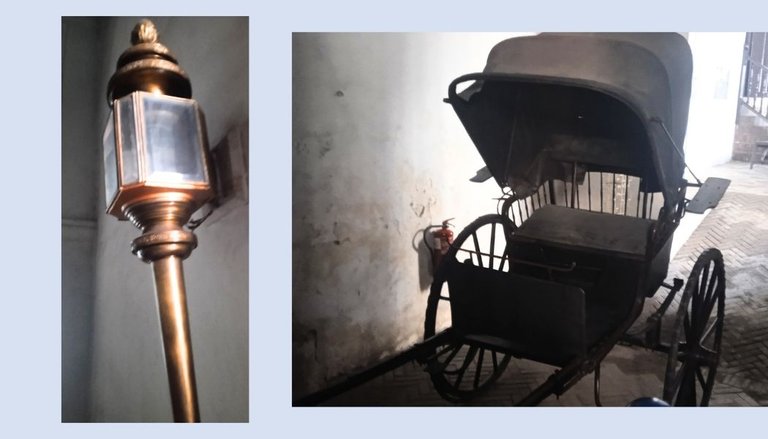
Al final del recorrido encontramos este quitrín, que realmente me deslumbró y es que tanta belleza acumulada nunca pensé conocer. Y es qué aquí podemos encontrar siglos de historia, cultura y tradición cubana, todo una joya internacional, al que acuden cientos de turistas todos los años.
En medio de todo el recorrido me sentí viajando por el tiempo y quisiera invitarlos a todos a visitar este monumental lugar a través de mi post.
At the end of the tour we found this chitrine, which really dazzled me and I never thought I would see so much accumulated beauty. And here we can find centuries of Cuban history, culture and tradition, an international jewel, where hundreds of tourists come every year.
In the middle of the entire tour I felt like I was traveling through time and I would like to invite you all to visit this monumental place through my post.
Las fotos fueron tomadas por mi con mi teléfono.y editadas en canva
The phothos were taking by me with my pnone and editated with
Translated by Deepl.com
Traducido por Deepl.com


